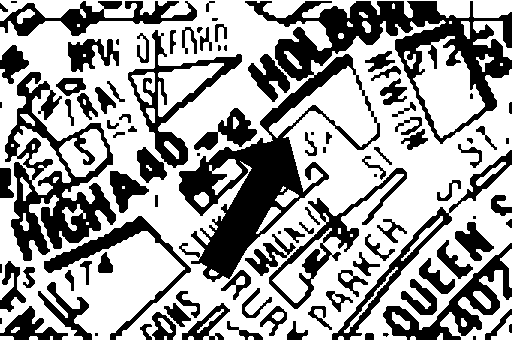This essay accompanies the presentation of Heath Bunting’s Communication Creates Conflict as a part of the online exhibition Net Art Anthology.
In the 1990s, as activists, artists, and their ilk explored the new possibilities presented by the internet, communities often formed around shared resources such as servers. In London, the cybercafe bulletin board and, later, the Irational web server—both initiated by Heath Bunting—played such a role role. Run on recycled hardware and software, they offered space for posting and exchange that tended towards the aesthetically and politically radical. In this interview, Rachel Baker, one of Bunting’s collaborators, recalls her experience as a participant in these two platforms, which shaped her own work in net art, activism, and internet radio.
Michael Connor: How did you begin collaborating with Heath?
Rachel Baker: I’d heard about him beforehand because he had a reputation in Bristol for doing unusual, conceptual graffiti and stenciling, and creating art exhibitions in subways. And doing everything that he could to occupy and create para-institutional art contexts and sites outside of official gallery institutions. Although I was at Goldsmiths doing an MA at the time (1995), we shared a condition I will term “institutional autism,” a kind of maladroitness around them, maybe a fear, probably class-based, so this parasitism was appealing. That was fairly characteristic of first-phase net culture anyway, the para-institutions.
So it was a natural step for us to participate with this nascent net art scene. A lot of people who were involved in the net art scene were also excited by the idea of creating parallel art contexts beyond the established ones. Pretty soon it all got absorbed anyway into these institutions, inevitably. But that period in the late 90s early 2000s was very exciting, because there was this attempt to create these independent culture zones, create something other than what was sanctioned by the art institutions and academic departments, which at that time were in thrall to the market ideologies of the YBA period in British Art.
MC: How did you become a member of cybercafe BBS?
RB: Heath was in the habit of fishing out old bits of computer and modems from skips. In the mid ‘90s people were throwing away their technology because it kept rapidly getting outdated into obsolescence. My very first modem did come from a skip in Bankside, London (I think British Telecom had an office there). I was at Goldsmiths studying for a Masters and I had a Goldsmiths email account and internet access at the college, but I didn’t have internet access at home. Heath had some old modems knocking around and he gave me a 2400 bps modem. At this stage that meant my first at-home online experience was logging onto the BBS, which was cybercafe, the bulletin board. Heath had given me a login.
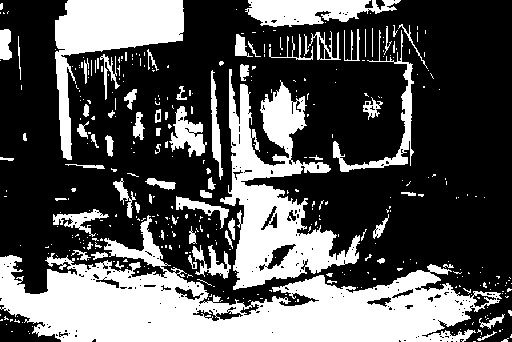
I was at home, by myself, plugging in the modem, logging into the cybercafe BBS, staring at the screen, terminal window open, wondering what I was supposed to do with it, and I remember very clearly these words being typed via the flashing cursor: “Hello, Rachel.” And I thought, “What? How did that happen?” Somebody's silently entering your home, your personal space through text on a screen with this flashing cursor. It was a very uncanny feeling...not like the telephone because text is more mediated than voice... It’s kind of interesting to remember that feeling, because people don't have it anymore...or do they? I don’t think they do. Net consciousness is second nature now. When the internet was at that early stage, there’s no broadband, you have to dial in. You got the whole set of noises coning from the modem, then you got this cursor flashing up, “H-E-L-L-O R-A-C-H-E-L. Hello Rachel.” Something’s talking to me. Who is it? What is it? Where is it coming from? It felt like an encounter with some sort of demon, a ghost in the machine. Heath was running that bulletin board from his kitchen, some PC running BBS software. There were other arty BBSes at the time. The Thing was an early BBS—cybercafe and The Thing were the only bulletin boards I'd come across.
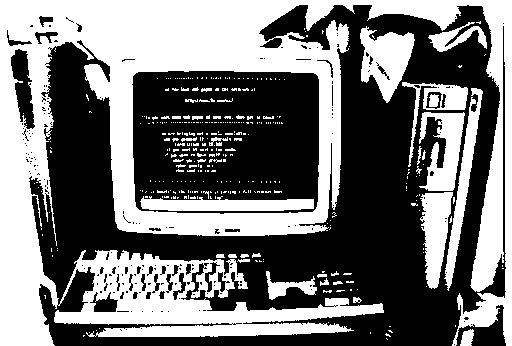
MC: What kinds of things did people post?
RB: Lots of ranting, poetry, random thoughts, pain and longing. A bit like Facebook. Yeah, ranting and poetry, maybe some music files, very short little music files, maybe an image file. Lots of it was Marc Garrett [co-director and cofounder of Furtherfield]. Marc was very prolific on cybercafe. You would usually find something every day from Marc.
MC: What were kind of your impressions of that community? What did you take from it?
RB: First of all, you imagine it to be much bigger than it really is. It was a handful of people posting! I might be wrong. You don't know though. Also, everyone's anonymous. Everyone's got a handle, everyone's got a nom de plume. You're in a kind of cave and you don't exactly know who's in the cave with you, could be anyone. You're not sure. I think Marc may have had several, and Heath had several identities. I don't know exactly.
But it felt bigger than it actually was. I imagined there were hundreds of people when probably there was only five or six. [Logs from Irational.org indicate 595 active users in total.]
MC: It was exciting to be a part of the community of cybercafe despite its small size?
RB: Yeah, yeah, yeah, yeah. It was exciting because of the disjointed feeling of time and space being condensed. It was a very addictive feeling...a kind of temporal and spatial confusion. This ability to connect with people very quickly through text. There was a very poetic relationship to text and to the material that was being sent to the cybercafe. You'd have these mysterious exchanges with people you’d never met which felt quite magical, emotional and intimate. Now it’s trivial.
MC: Did you think of yourself during this time as a net artist?
RB: No, definitely not. No, I hadn’t even encountered the term. Initially that didn’t really figure for me on cybercafe or Irational.org. That became something, a kind of discursive context, once I’d subscribed to [the mailing list] Nettime. And you know there were lots of conferences and gatherings and events around this burgeoning scene. One of the first ones that I went to was in Budapest. It was called Metaforum. It was in 1995. That's where I met Diana McCarty, Pit Schultz, and various other people from Nettime. Rasa and Raitis from eLab, and Olia Lialina. And Alexei Shulgin. And Ted Byfield.
Another early gathering was at Backspace, London, called Anti with an E, organised by Heath. Lots of people came to that. It was difficult because people’s expectations would be confounded. The Backspace internet cafe that James Stevens was presiding over was quite a small space. But people came from all over Europe. Because it was exciting. A nascent network of fellow travellers, but also there was a curiosity in discovering independent projects like Irational.org and Backspace. These events and spaces created an infrastructure of common interest around online culture across Europe. Anti with E got a small amount of funding from Arts Council Org because people there, such as Bronac Ferran and Lisa Haskel, had noticed where the energy was around net and digital culture at that time. But it was quite amusing that people turned up and found themselves in this tiny little spot in south London. Which is now, by the way, a Starbucks.
MC: Around this time, Heath shifted from cybercafe to Irational.org
RB: Yes. Okay, let me get this shift right. Heath had the domain cybercafe.org registered and he sold that to Ivan Pope. He was the CEO of a company called NetNames, a domain name registration company. He was also an artist and an entrepreneur. He was kind of important in the early formation of Irational.org. Heath sold cybercafe.org to Ivan for a sum of money—I think about a thousand pounds. He also registered Irational.org with Ivan via NetNames. Heath couldn't spell. The name “Irational” obviously is misspelled, right? It's got one R instead of two. It’s an error. But it's this fortuitous misspelling of irrational that is idiosyncratic of Heath’s M.O. You can never tell if he’s purposefully misspelling or if he's actually dyslexic, probably a mixture.
MC: Was the server located in a particular place and people sort of shared costs and resources and access to it?
RB: Yeah. When I joined the server, it was somewhere way out in west London, I believe, on a server rack in Royal Oak. It certainly was a technical platform, but it was more about building a social grouping around a platform, the server. Heath’s approach to building a kind of context or a community is quite transactional. The transactions at that time went, “Hey, would you like an email address and a bit of web space and even a modem in exchange for building this social infrastructure with me?” Maybe it could be like a gang, or tribe. I think he was into that idea—street gangs, internet gangs...
MC: What kind of community was formed around Irational.org? Was it similar to cybercafe?
RB: The cybercafe BBS was more like an early rudimentary Facebook experience, I suppose. Or a Reddit discussion board. You constantly have that sense of other people available to connect with, a group chat space, whereas Irational.org, as a web server, is more about building individual web pages, presenting individual work or research. It was more of a service resource. People would join Irational.org in order to get an email and web account to host their projects on. It became more like a membership-based web-hosting thing, and sometimes those members would collaborate. Or not. Like Daniel García Andújar, a Spanish artist, and Minerva Cuevas, a Mexican artist, both very successful. There were certain commonalities of practice, an interventionist approach, playing with systems and language, often politically.
MC: The Irational members always sort of the ethos of the city and the web being connected I think, right?
RB: Yeah. Yep, you’re right. You’re absolutely right. There was a lot of walking. A lot of urban walking. [Heath and] Simon McLennan, another Bristol comrade, would do a lot of graffiti tagging around Bristol. And so it was in London as well. We would all get together for some long walks—walking and chalking. You’d get a call-out to meet up at a location in London, maybe Covent Garden, and you’d grab a bit of chalk. Then, you’d wander around London all day. [We were] following the urban graffiti tag ethos, finding unusual, difficult, physically challenging spaces, but we weren’t using spray paint we were always using chalk.

MC: What were you writing with the chalk? Or drawing?
RB: Simon had a whole repertoire of what he called “scarabs” or “beetles.” They’re abstract looking insects. Heath was building a whole repertoire of symbolic chalk tags—stars were very important, and bones... They were very consciously thought about, they all meant something to him, they were a vocabulary of his own.
MC: What did you chalk?
RB: I really liked runes. My favourite kind of tagging was as if I’d thrown some chalk sticks on the ground, usually just lines randomly scattered as if it was a pile of sticks, but I also took to using “TM.” TM stood for my then alter ego or avatar, Trina Mould, which I conceived of as a sort of teenage girl gang, like the Spice Girls or something, but more punk. I would apply “TM” like a pseudo “trademark” to everybody else’s tag.
Here's a story to tell about this. It was just me and Heath on this particular walk. We were in the Charing Cross area doing what we do. Just tagging surfaces up in white chalk. On this particular walk, I had a marker pen, a black marker pen. Heath was doing his elevating star graffiti tag in chalk and I was TM’ing with the black marker pen. He did his tag on a pretty nondescript looking building and I TM’ed it . At that point a red-faced angry man confronted us. He was very, very angry, livid, and he said he was going to call the police. “What do you think you're doing? This is an MOD building!” It was a Ministry of Defense building. I didn't know that. I’m still not clear whether Heath knew that or not because he tended to know that kind of stuff. He was quite interested in knowing what buildings were in relation to governmental authorities like the Ministry of Defense, but I didn't know. We left him in his rage, but he sent the security staff of the MOD after us. They dragged us back into the building, held us there until the police came. We were separated and taken into individual interview rooms. When the police came outside to look at what we'd done, it was a bit stupid because all we’d done was this very minimal not-even damage...it was just chalk. The worst thing was actually my marker pen, my little TM, that was the worst that we'd done cos it was a permanent marker. They were like, “Why did you do this?” I think Heath said something provocative like, “This is done in solidarity with the IRA.” Which is admittedly a very stupid thing to say. I said, “It's art!” I remember the policeman said, “Just keep your art in an art gallery.” They confiscated the chalk and the pen and gave us a little receipt, which I still have. I'm pretty sure I still have it somewhere, a receipt from the metropolitan police declaring, “One white chalk, one black marker pen.”
.gif)
MC: So what does this have to do with the internet?
RB: My TM (trademark) tag sign was an acknowledgement of the absurdity of proprietizing imagery and symbolic language in public space. This bears some relation to the proprietizing logic that came with the web. We were trying to understand property relations, what you could access, what you could not. What was hackable, in the broad sense of the term. It was training for a systems-hacking sensibility. Also just noticing and observing things, reading and writing the street.
Do you know about warchalking? Warchalking was leaving symbols in public places to tell you where there was an open wifi network. It was inspired by hobo symbols that told itinerant train-hoppers where was a good place to stay, or where wasn’t a good place to stay. Warchalking was like trying to build a shared language amongst a network of itinerant wifi hoppers amongst the streets of London, to build a coded environment that could be read, re-territorialized.
Some of the things that we would chalk actually were URLs to Irational.org. In fact, Heath made a project, Project X, which involved chalking the Project X URL in public places. You'd see the URL scrawled in chalk in various places around London, bridges or alleyways, places that would have some kind of personal significance…through walking around London and turning it into a kind of fiction, a personal narrative I suppose. So if you found this particular URL in the street and if you went to that URL online, you'd get to the website with a form. And the form would ask you, where did you see this chalk? Who did it? Why do you think it was done? And then that takes you to a kind of a list of responses. What that does quite nicely is get you to think about location—locate where Heath chalked that URL all over the world, locate yourself in relation to everyone else who noted it, not just in London, but worldwide.
What was going on was something akin to what I understand as “post digital.” I think Irational.org and Heath’s work was post digital before it became a fashionable theoretical term. We had a keen sense of infrastructure, of networks as lived, coming both from the street derives and the internet, creating gateways to one another.
MC: Another one of those kind of gateways would have been the Kings Cross call-in.
RB: Heath published the various telephone numbers of all the public telephone boxes in Kings Cross train station. And then directed people, via a web page, to call those public telephone boxes at certain time in the day. It now seems simple and banal, but actually at the time, I remember it being extraordinary. Because all the telephone boxes started ringing, it must have been around seven P.M., in Kings Cross. All the telephone boxes were ringing. So that was an example of these gateway projects between street and internet.
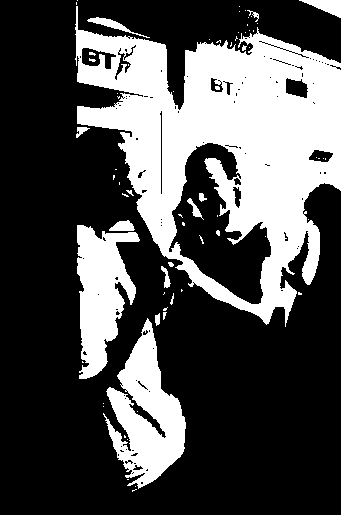
So that was just a kind of example of these gateway projects between street and internet that really kind of switched on sensibility around network aesthetics.
MC: It’s a great story. But now that we’ve seen this kind of public space intervention co-opted as marketing tactics with things like flash mobs, how can we connect with the radicality of this gesture? Was it doomed to failure?
RB: I don’t think it’s fair to say that as experiments they failed, because on their own terms, they were successful, these network experiments. If only to reveal the network. That was the thing that I learned, particularly with the TESCO loyalty card project. Reveal the network, even if temporarily. This is why the recent theory about infrastructuralism or so-called stacktivism doesn’t seem all that new. We were already discovering that in the ‘90s. We were already discovering infrastructure, political and aesthetic, just walking the streets, tagging and creating gateways via the internet. Heath had a particular genius for intuiting network hacks both in an artistic, poetic sense and a political sense. And I was always drawn to that as well, but more towards activism and the politics of networks, rather than art. The idea that you could enter spaces online/offline that you wouldn't ordinarily be allowed to appealed to me. Or that you could, through acts of camouflage, enter spaces that would ordinarily be off limits. This is a distinctly class-based motivation. Heath was always looking for techniques that would help him live in, and respond to, the moment. I was more interested in thinking about longer term strategies for coping with class relations in corporatism and commodification, in the workplace. And yes, that was doomed to fail...
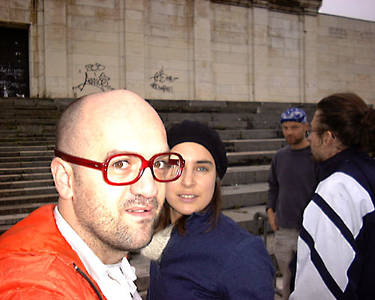
Vuk Cosic, Rachel Baker, Heath Bunting, Alexei Shulgin. Image via Irational.org.
